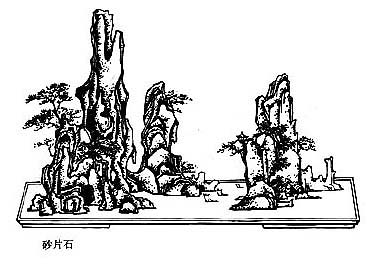論
語
Lun Yu 
 – The Analects of Confucius
– The Analects of Confucius
The Master discusses with his disciples and unveil his preoccupations with society. Tr. Legge (en), Lau (en) and Couvreur (fr).
Lunyu X. 6. (246)
Rules of Confucius in regard to his dress.
1. The superior man did not use a deep purple, or a puce color, in the ornaments of his dress.
2. Even in his undress, he did not wear anything of a red or reddish color.
3. In warm weather, he had a single garment either of coarse or fine texture, but he wore it displayed over an inner garment.
4. Over lamb's fur he wore a garment of black; over fawn's fur one of white; and over fox's fur one of yellow.
5. The fur robe of his undress was long, with the right sleeve short.
6. He required his sleeping dress to be half as long again as his body.
7. When staying at home, he used thick furs of the fox or the badger.
8. When he put off mourning, he wore all the appendages of the girdle.
9. His undergarment, except when it was required to be of the curtain shape, was made of silk cut narrow above and wide below.
10. He did not wear lamb's fur or a black cap on a visit of condolence.
11. On the first day of the month he put on his court robes, and presented himself at court
Legge X.6.
The gentleman avoided using dark purple and maroon coloured silk for lapels and cuffs. Red and violet coloured silks were not used for informal dress. When, in the heat of summer, he wore an unlined robe made of either fine or coarse material, he invariably wore it over an under- robe to set it off. Under a black jacket, he wore lambskin; under an undyed jacket, he wore fawnskin; under a yellow jacket, he wore fox fur. His informal fur coat was long but with a short right sleeve. He invariably had a night robe which was half as long again as he was tall. Their fur being thick, pelts of the fox and the badger were used as rugs. Once the period of mourning was over, he placed no restrictions on the kind of ornament that he wore. Other than skirts for ceremonial occasions, everything else was made up from cut pieces. Lambskin coats and black caps were not used on visits of condolence. On New Year's Day, he invariably went to court in court dress.
Lau [10:5]
Cet homme honorable ne portait pas de collet à bordure de couleur violette1, ni de collet à bordure brune2. Il ne prenait pas pour ses vêtements ordinaires la couleur incarnat, ni la couleur pourpre3. Pendant les chaleurs de l'été, sous une tunique de chanvre d'un tissu peu serré, il portait une autre tunique4. En hiver, il portait une tunique noire sur une tunique doublée de peau d'agneau noir, ou une tunique blanche sur une tunique doublée de peau de cerf blanc, ou une tunique jaune sur une tunique doublée de peau de renard jaune. La tunique doublée de fourrure qu'il portait ordinairement était longue ; mais la manche droite était plus courte que la gauche5. Les vêtements doublés d'épaisse fourrure de renard ou de martre lui servaient à la maison. Quand il n'était pas en deuil, il portait toujours divers objets suspendus à la ceinture. Quant à sa jupe, celle qui lui servait à la cour ou dans les temples avait des plis à la ceinture ; pour les autres, l'étoffe était deux fois moins large à la ceinture qu'à la partie inférieure. Il ne mettait pas sa tunique doublée de peau d'agneau ni son bonnet noir pour aller pleurer les morts6. À la nouvelle lune, il ne manquait pas de se présenter à la cour en habits de cour.
Couvreur X.6.
b. Bahkan untuk pakaian dalam biasa juga tidak digunakan warna merah atau kemerah-merahan.
c. Pada waktu musim panas tidak mengenakan pakaian rangkap dari kain katun, halus atau kasar, tetapi selalu mengenakan pakaian dalam.
d. Bila mengenakan pakaian luar berwarna hitam, pakaian dalamNya dibuat dari kulit kambing hitam. Bila mengenakan pakaian luar berwarna putih, pakaian dalamNya dibuat dari kulit rusa putih. Dan bila mengenakan pakaian luar berwarna kuning, pakaian dalamNya dibuat dari kulit rubah kuning.

The Analects of Confucius – Lun Yu X. 6. (246) – Chinese on/off – Français/English
Alias the Lunyu, the Lun Yü, the Analects, les Entretiens du maître avec ses disciples.
The Book of Odes, The Analects, Great Learning, Doctrine of the Mean, Three-characters book, The Book of Changes, The Way and its Power, 300 Tang Poems, The Art of War, Thirty-Six Strategies
Welcome, help, notes, introduction, table.
Index – Contact – Top























